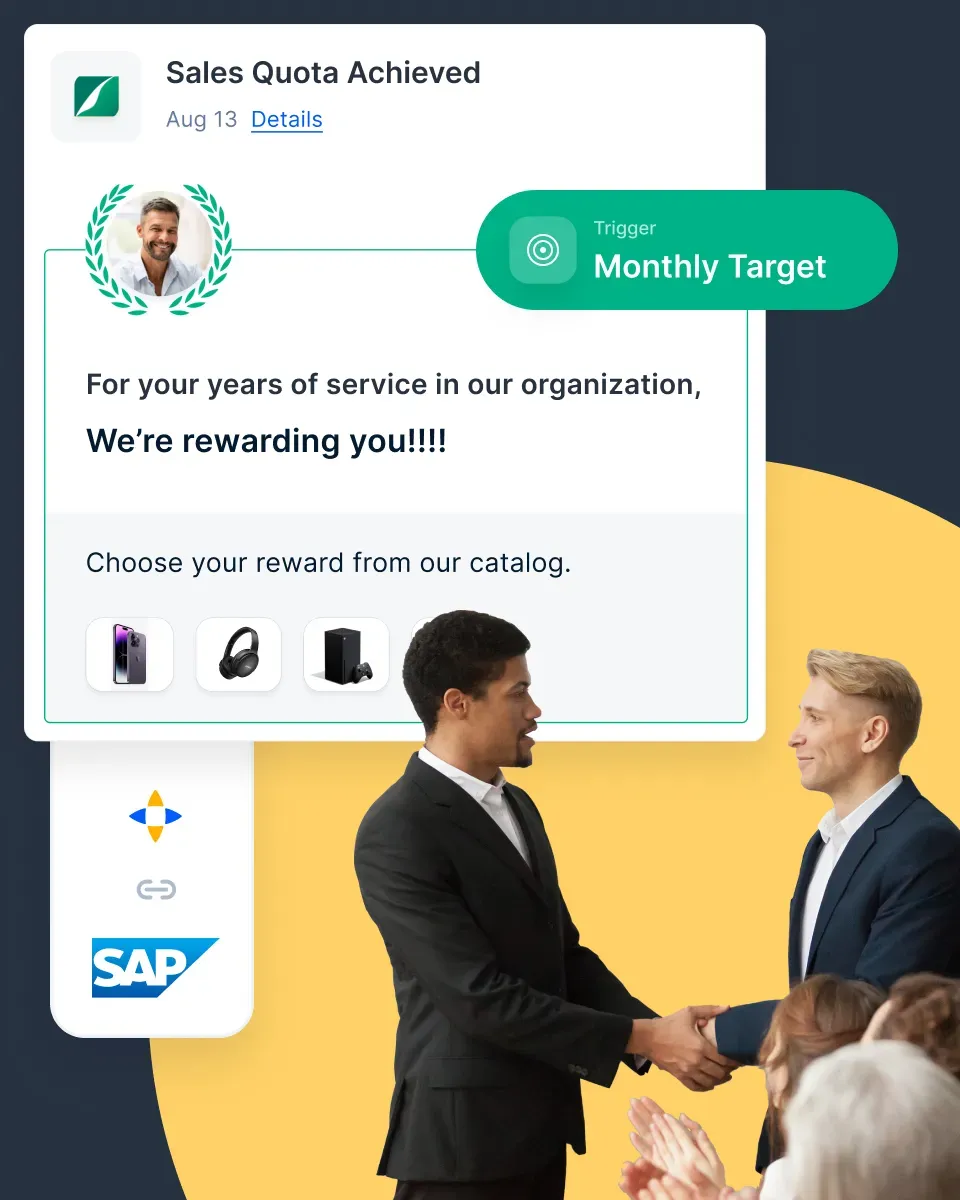11 Latest Employee Retention Trends: What’s Keeping Employees Around in 2025?
Discover the latest employee retention trends for 2025, from flexible work models to AI-driven engagement, and learn how companies keep top talent committed.
Di halaman ini
Gone are the days when a steady paycheck and an annual bonus were enough to keep employees loyal. Today’s workforce expects more than just financial rewards—they want flexibility, career growth, recognition, and a workplace that truly values their contributions. Companies that fail to meet these expectations risk high turnover, disengaged teams, and increased hiring costs.
With talent shortages and shifting workplace dynamics, businesses are rethinking their approach to employee retention. Organizations now focus on employee experience, well-being, and purpose-driven work cultures rather than just traditional perks.
From four-day workweeks and AI-powered engagement tools to personalized benefits and stronger DEI initiatives, companies are making bold moves to keep employees motivated and committed long-term.
So, what’s working, and what’s outdated? Let’s explore the latest employee retention trends shaping workplaces in 2025.
11 Latest employee retention trends in 2025
Tren retensi karyawan memprediksi masa depan pekerjaan-pola yang diantisipasi yang memengaruhi bagaimana perusahaan dapat mempertahankan tenaga kerja mereka, meningkatkan loyalitas, dan meningkatkan daya saing.
1. Peluang pembelajaran dan pengembangan
A workplace survey says that more learning opportunities can cause 94% of employees to stay longer at a company.
Ingin memanfaatkan tren pembelajaran dan pengembangan (L&D) ini? Mulailah dengan berfokus pada salah satu langkah perekrutan yang paling penting: proses orientasi. Hal ini terbukti dapat mendorong karyawan untuk bertahan lebih lama (hingga tiga tahun!).
Ciptakan lingkungan belajar yang berkelanjutan dengan menawarkan platform pembelajaran digital, pelatihan silang, dan program bimbingan. Jika Anda menginginkan pendekatan yang lebih menarik dan menyenangkan, Anda bisa menyelenggarakan lokakarya pengembangan gratis atau membayar konferensi industri di luar kota.
Fungsi-fungsi sederhana ini dapat memberdayakan karyawan dalam jalur karier mereka, membuat mereka lebih diakui dan dihargai. Perusahaan dengan L&D yang efisien dapat mempertahankan tenaga kerja yang lebih termotivasi dan berketerampilan tinggi.
2. Membantu karyawan dengan kesejahteraan
With work-related stress affecting 80% of the workforce, it’s about time all companies start to recognize the overall well-being of their employees. The Chartered Institute of Personnel and Development outlines these crucial areas:
- Kesehatan: Ini bukan hanya tentang kesehatan fisik. Kesehatan mental juga sama pentingnya. Inisiatif dan peraturan yang mengakui masalah kesehatan mental dapat membuat perbedaan yang signifikan.
- Good work: Setting an appropriate reward system—which we have a detailed guide for—goes a long way here. Good line management and a suitable physical working environment create an environment where productivity thrives.
- Nilai-nilai: Menjunjung tinggi dan mempromosikan nilai-nilai perusahaan mendorong keselarasan dan keterlibatan karyawan.
- Kebutuhan sosial: Memberikan suara kepada karyawan dan membina hubungan positif dalam tim untuk meningkatkan kepuasan kerja secara keseluruhan sangatlah penting.
- Pertumbuhan pribadi: Menerapkan rencana peningkatan berkelanjutan akan menurunkan kemungkinan pergantian karyawan dalam waktu singkat.
- Gaya hidup: Program diet dan aktivitas fisik dapat menjadi inti dari faktor ini. Beberapa contoh upaya termasuk klub resep, pilihan yang lebih sehat di kantin, dan organisasi yang berhubungan dengan olahraga.
- Kesejahteraan finansial: Menawarkan kompensasi yang kompetitif dan panduan tentang manajemen keuangan pribadi yang meningkatkan keamanan finansial.
Mengatasi area-area yang menjadi perhatian ini bisa menjadi hal yang cukup besar bagi perusahaan mana pun. Namun, Anda dapat memulai dari yang kecil, dengan mengutamakan inisiatif kesehatan mental, sistem penghargaan yang mapan, dan menggabungkan inklusivitas dengan keragaman di tempat kerja.
3. Pekerjaan jarak jauh dan hibrida perlu menjadi fokus utama
Banyak penelitian yang mengonfirmasi korelasi antara pengaturan kerja hibrida dan keseimbangan kehidupan kerja yang lebih baik di antara para karyawan - sebuah kombinasi yang diyakini oleh para pemimpin HR sebagai pendorong utama dalam retensi.
Semakin banyak orang yang menyadari dan lebih memilih pengaturan kerja jarak jauh dan fleksibel, dan perusahaan harus mengikuti tren ini. Pengaturan kerja seperti itu mungkin memiliki kekurangan, termasuk:
- Gangguan komunikasi
- Berkurangnya keterlibatan tim
- Kesulitan melacak produktivitas karyawan
- Mengelola zona waktu yang berbeda
Namun, Anda bisa mengatasi tantangan pengaturan fleksibel dan jarak jauh dengan membuat kebijakan yang secara jelas mendefinisikan di mana dan kapan karyawan bekerja. Dan, tentu saja, memanfaatkan penggunaan teknologi.
In the US, 74% of companies have already adopted this work model, with approximately 59% of employees preferring to work in such companies, according to Zippia.
See our guide for remote work to learn in detail the techniques and tools you can use to foster better hybrid arrangements.
4. AI-powered employee engagement
Artificial intelligence is transforming how businesses interact with employees. AI-driven platforms provide personalized learning experiences, automate repetitive HR tasks, and analyze employee sentiment in real time. By leveraging AI, companies can identify disengagement early and implement targeted retention strategies, making employees feel more valued and heard.
With real-time feedback loops and intelligent engagement analytics, platforms like Empuls help businesses build a thriving, motivated workforce while reducing attrition.
5. A skills-based approach to hiring
Meskipun banyak tren akan berubah seiring berjalannya waktu, ada satu tren yang tetap efektif.
Banyak perusahaan beralih dari metode perekrutan tradisional yang berfokus pada gelar dan pengalaman masa lalu ke pendekatan yang lebih berbasis keterampilan. Pada gilirannya, hal ini juga dapat meningkatkan keragaman di dalam tim mereka.
Alihkan fokus Anda untuk menilai kemampuan dan potensi tertentu selama proses perekrutan; pelatihan dapat mengisi kekosongan di kemudian hari. Pendekatan ini dapat menghasilkan tenaga kerja yang sangat terampil, dan karyawan baru Anda akan merasa lebih dihargai dan dihormati karena kemampuan dan kontribusi unik mereka.
You can even apply your skills-based approach to the existing workforce. In that case, you can further refine data-driven employee retention strategies and identify who requires upskilling or reskilling. It gives you a more proactive technique to drive employee satisfaction, professional growth, and retention.
In turn, according to TestGorilla, 92.5% of companies that use this approach to hiring have reduced the rates at which they hire the wrong candidates.
6. Personalized rewards and recognition programs
A customized approach to rewards and recognition significantly boosts employee engagement. 72% of employees who experience outstanding recognition say their organization commonly acknowledges "little things."
Orang-orang ini 20 kali lebih mungkin untuk terlibat daripada mereka yang menerima pengakuan berkualitas rendah.
Oleh karena itu, hindari pendekatan yang bersifat satu ukuran untuk semua. Pengakuan perlu disesuaikan berdasarkan individu, generasi, dan industri, untuk memastikan bahwa setiap orang dihargai dan diakui secara efektif atas kontribusi dan peran mereka yang unik.
7. Diversity, equity, and inclusion (DEI)
A majority of U.S. workers acknowledge the benefits of emphasizing DEI. Yet, a Pew Research study reveals prevalent biases, with many believing that being a man or White offers job advantages.
Melawan keyakinan yang sudah mendarah daging ini membutuhkan pendekatan DEI yang komprehensif yang mempromosikan keadilan, mengakui kekuatan yang beragam, dan secara aktif melawan bias gender dan ras untuk mendorong lingkungan kerja yang adil dan inklusif.
8. Flexible benefits and perks package
There may be limited current data regarding the number of employees prioritizing benefits over salary, but there's clarity on what perks employees value most. Here are the top three and the corresponding population prioritizing them:
- Tunjangan kesehatan (89%)
- Rencana pensiun yang menjamin keamanan finansial (81%)
- Hak cuti, mempromosikan keseimbangan kehidupan kerja (81%)
9. Revolution of AI to enhance the employee experience
AI is projected to revolutionize the US labor market, with anticipated boosts in overall productivity growth by 1.5% in the next decade.
Pada saat yang sama, pasar untuk teknologi AI sedang dalam tren peningkatan, diperkirakan akan mencapai nilai satu triliun dolar pada tahun 2028. Teknologi ini telah mengubah tempat kerja dalam beberapa cara:
- Otomatisasi tugas-tugas yang berulang: Teknologi ini dapat merampingkan tugas-tugas rutin dan meluangkan waktu untuk tugas-tugas yang lebih kompleks.
- Pelatihan dan pengembangan karyawan: Sistem pembelajaran yang didukung AI dapat menyesuaikan pelatihan dengan kebutuhan individu, sehingga meningkatkan keterampilan karyawan.
- Talent acquisition: AI can speed recruitment by screening resumes and predicting candidate success.
- Employee engagement: Chatbots respond immediately to inquiries, enhancing satisfaction and engagement.
10. Four-day workweek trials
The traditional five-day workweek is re-evaluated as more companies experiment with four-day workweeks without reducing pay. Research shows that a shorter workweek enhances productivity, reduces burnout, and improves job satisfaction.
Companies that adopt this model find that employees are more engaged, less stressed, and more likely to stay long-term. While not all industries can implement this fully, flexible scheduling and compressed workweeks are increasingly popular retention strategies.
11. Boomerang employees
Rehiring former employees—often called boomerang employees—is becoming a bright retention trend. Many professionals leave a company only to return later when they recognize its growth potential, culture, or improved benefits.
Organizations that maintain positive relationships with departing employees through alumni networks or open-door policies have a higher chance of welcoming back experienced talent. This reduces hiring costs and onboarding time, benefiting both the company and the returning employee.
Driving employee retention with meaningful engagement

Employee retention is not just about competitive salaries but about creating a workplace where employees feel valued, connected, and motivated to stay. Organizations must focus on recognition, rewards, and engagement with shifting employee retention trends to build long-term commitment.
This is where Empuls makes a difference. As an all-in-one employee engagement platform, Empuls helps businesses foster a culture of appreciation, motivation, and collaboration, ensuring employees stay engaged and committed.
✅ Seamless rewards and recognition: Celebrate contributions, milestones, and achievements with personalized rewards that motivate employees.
✅ Data-driven employee feedback: Use real-time surveys and sentiment analysis to understand workplace engagement and take proactive retention measures.
✅ Stronger team connections: Enhance workplace relationships with a social intranet, where employees can collaborate, celebrate, and engage effortlessly.
✅ Wellness and financial benefits: Offer tailored benefits like tax-free fringe benefits, wellness programs, and exclusive discounts to improve employee satisfaction.
✅ Continuous engagement and motivation: Automate appreciation, recognize employees consistently and create a positive work culture that drives long-term retention.
Retaining top talent requires more than just perks—it demands a work environment where employees feel heard, appreciated, and motivated. Empuls equips businesses with the tools to build a workplace where employees choose to stay, contribute, and thrive.
Pikiran terakhir
Employee retention isn’t just about keeping people on the payroll—it’s about creating an environment where employees want to stay. The latest trends show a clear shift towards flexibility, career growth, well-being, and meaningful work. Companies prioritizing these elements will build a more engaged, loyal, and high-performing workforce.
Ignoring these changes, on the other hand, could lead to higher turnover, disengaged teams, and talent shortages. Businesses that listen to employees, adapt to evolving expectations, and invest in workplace culture will be the ones that thrive in 2025 and beyond.
Retention isn’t a one-time effort—it’s an ongoing strategy. The question is, is your organization ready to evolve?













